Mega ships will sail from EU ports avoiding ETS fees
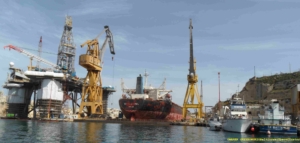
 By Marek Grzybowski
By Marek Grzybowski
The Malta Maritime Forum has expressed concern about the “imminent risk” of shipping operators withdrawing from Malta as a result of the introduction of an eco-tax by the European Union next year. It is a very “likely scenario” that Malta will lose its role as a transhipment hub as operators choose ports of call outside the EU where no such tax will be paid, MMF CEO Kevin J. Borg said in an interview with The Malta Independent on Sunday.
The Malta Maritime Forum (MMF) has said it supports the truly laudable climate and environmental protection goals behind the EU Emissions Trading Scheme (ETS). However, current shortcomings in its implementation mechanism may unintentionally make it inconsistent with the fundamental principles and intended objectives of the European Union. As a result, effective solutions promoting greenhouse gas neutrality will not be achieved.
EU ETS in the European Union’s strategy
From the beginning of next year, the EU ETS will be the basic tool for implementing the European Union’s strategy aimed at combating climate change. This is to be a key instrument for mobilizing ship operators to reduce greenhouse gas emissions.
The EU ETS shipping directive obliges ships to waive the so-called EUA (Emissions Allowances) to offset the carbon dioxide emissions produced by swimming.
– In the absence of enforcement tools for all operators using ports around the world, ships entering EU ports will face higher costs due to EUA fees. [Shipowners – Ministry of Economy] who manage to bypass EU ports may avoid complying with the regulations (and costs) arising from the directive altogether,” Borg warns.
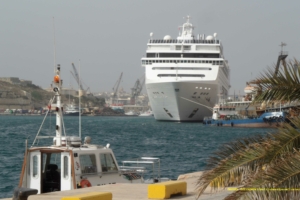

Malta’s maritime business in GDP
Maritime industries are a drip for Malta with a life-giving inflow of real cash. There are over 90,000 registered under the Maltese flag. ships.
– The maritime business contributes as much as 13% of the income of the Maltese national economy, generating over PLN 12,000. jobs, said Godwin Xerri, president of the Malta Maritime Forum.
A study commissioned by the MMF in 2020 shows that the maritime sector generates EUR 855 million from direct economic activity to the state budget. In fact, however, the budget literally receives almost EUR 2.2 billion annually, taking into account companies operating in the immediate vicinity of the Maltese maritime economy.
There are approximately 12,000 companies in this industry. direct jobs. However, it is estimated that additional services are provided by over 20,000. people. In addition, there are jobs in the financial and insurance sectors.
In addition, the maritime sector generates approximately EUR 25 million in budget revenues. The average value added per employee in the Maltese maritime business is 53% higher than the national average. The maritime economy also experiences a faster growth rate (12%) compared to the entire economy (10% – data from 2020).
Ships with a capacity exceeding a certain threshold will be obliged from January 2024 to “buy” allowances for 40% of their carbon dioxide emissions under the new regulations. This percentage is expected to increase to 100% by 2027.
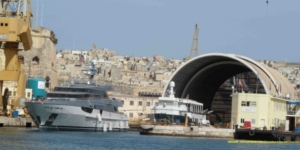
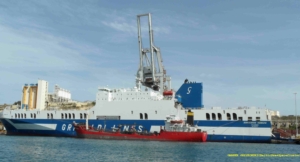
Costly ETS
– The cost difference between ports in the EU and outside the EU may amount to EUR 34 million per year for each route served – warns Borg. This was confirmed by major carriers who stated that the fierce competition scenario is so intense that the decision of any single carrier to incur additional EUA costs could have drastic consequences for the shipowner compared to those companies that choose to bypass the directive.
In 2024, the bill for EU ETS regulations will cost maritime transport operators with ships over PLN 500,000. GT approximately EUR 3 billion, as we wrote in GospodarkaMorska.pl .
“There is no doubt that this discrepancy is so prohibitive that it forces major shipping operators to look for alternative solutions,” Borg said in a statement to The Malta Independent.
EU game with the EU seaports
He explained that the increased pace of investment by major shipping lines in container terminals to increase TEU capacity in ports located in neighboring non-EU Mediterranean countries (such as Egypt and Morocco) leaves no doubt that shipping lines are preparing alternatives to bypass the EU regime ECJ.
Borg noted that such investments are a clear signal that major carriers are being forced to make irreversible decisions to bypass EU transhipment hubs located in the Mediterranean Sea. In his opinion, there is no doubt that instead of EU ports, ships will be directed to non-EU ports.
East Port Said and Tanger Med will be used to avoid the prohibitive costs imposed by this directive. Smaller feeder ships will be directed from the new hubs to European ports.
Of course, the European Commission has foreseen the possibility of using practices that will involve circumventing EU regulations and avoiding fees. An attempt was made to remedy this situation by introducing a corrective solution called the transhipment rule.
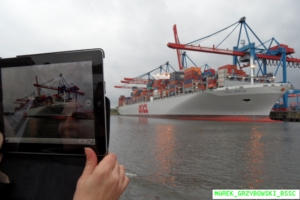
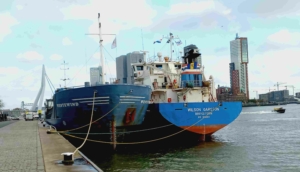
Will mega ships bypass the North Sea and Baltic ports?
The European Commission has published an annex listing two “neighboring non-EU ports”, located outside the EU, which will not be considered as “port of call” for ETS charging purposes. The guidelines included in the annex are easy to bypass.
Borg cites many arguments for rethinking ways to combat global warming and CO2 emissions. The threat identified by the Malta Maritime Forum concerns not only Malta and the ports of the Mediterranean Sea.
Due to additional fees, we can also expect changes in the North Sea and Baltic Sea services. We will notice the consequences not only in ports and container terminals. It may turn out that as a result of the activation of short sea shipping in the Mediterranean, activity in European transport corridors will change. And a significant part of the North Sea and Baltic ports may find themselves at the end of feeder connections of African and Arab ports. Intermodal traffic on transport corridors leading from European ports in the Mediterranean may also increase.
More: Costly CO2 emissions. EUR 8.4 billion by 2026 will be spent by merchant fleet operators
